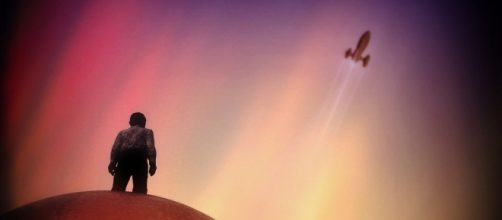Professor Stephen Hawking has cited asteroid collisions as one likely reason for the dearth of intelligent life in the universe. Earth can’t be the only inhabited planet threatened with life-ending asteroid collisions. “Potentially the most serious preventable natural disaster facing the planet, is the collision of a large asteroid or Near Earth Object (NEO) with the planet. A large asteroid strike anyplace on the surface could end all life in a matter of hours and a smaller collision could wipe out higher mammals (including people). Fortunately this is something we have the technology to prevent but only if we can first identify potentially dangerous NEO orbits.
This has been the goal of The B612 Foundation since its founding by former U.S. astronauts Ed Liu and Rusty Schweikert in 2002- locating potential threats. Beloved children’s novella The Little Prince was set on Asteroid B612 and the B612 Foundation took its name from that object.
B612 recent progress
The most recent update on progress from B612 entitled “Engaging the World in Planetary Defense” specifically looks at a new synthetic tracking technology which is a way to make it easier to track dim, fast-moving asteroids through optical signal processing. Progress has also been made with the Asteroid Decision Analysis Machine (ADAM) which has the goal of helping, “world leaders, scientists, and the planetary defense community interpret and manage the unprecedented flood of asteroid discoveries expected within the decade as a result of new observational platforms.”
B612's first goal was to locate and track dangerous 140-plus meter objects
90% of the estimated 30,000 NEOs larger than 140 meters (the goal set by U.S.
Congress in 2008 for a NASA project which Congress never funded) should be cataloged by 2030 but B612 Foundation CEO Ed Liu warned that objects smaller than 140m can devastate large areas such as the 1908 Tunguska blast which is thought to have been the equivalent of 5 megatons of TNT or more. The extremely fast orbital processing of the synthetic tracking technology should eventually permit detection of the 99% of the still dangerous 3,000,000-plus 40-140m NEOs. Working with the Jet Propulsion Laboratory and scientists at Cal Tech, B612 has been able to demonstrate that synthetic tracking works with ground-based telescopes so the task left is to integrate it with space-based telescope datum.
There are also thought to be about 1,000 potential planet-killer asteroids larger than 1km, most of which are known and tracked - there is no technology thought capable of altering their orbit even if they are going to collide with earth.
B612's ADAM is designed to sort out dangerous objects
Posing such an existential threat It may be hard to believe but as of today there isn't even a coordinated system to warn of a potential asteroid impact once detected. The United Nation's International Asteroid Warning Network is the first step in that direction but it is just at the very early planning stage. One reason for this is that it is very difficult to amass all the data being collected daily on newly discovered NEOs or those with orbits altered by collisions with other asteroids or affected by planetary gravitational fields.
B612's newest major project ADAM, Asteroid Decision Analysis Machine, is an effort to integrate all the available data on an ongoing basis and make predictions as to which NEOs may be in an orbit which can make them a threat to the earth. Today we are discovering about 30 new asteroids every week, but as new technologies, such as the synthetic tracking system, and new telescopes are deployed this could soon become hundreds or even thousands of new NEOs found each week.

